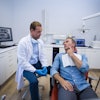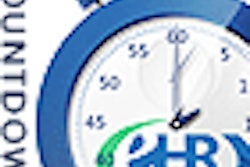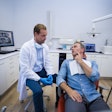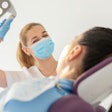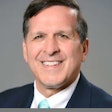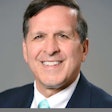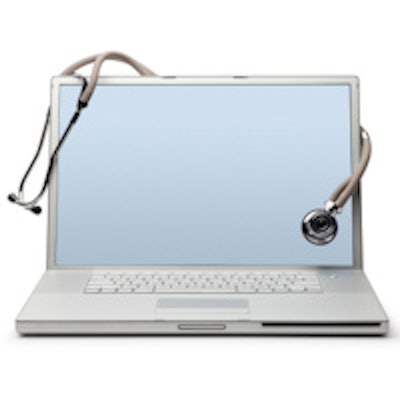
How dental care providers interact with computers and electronic health records (EHRs) during a patient visit can affect the success of that visit and patient-provider communication overall, according to a new study in the Journal of the American Dental Association (September 2013, Vol. 144:9, pp. 1022-1029).
Researchers from the University of Wisconsin-Madison and the Marshfield Clinic Research Foundation surveyed dentists, hygienists, and dental assistants at three dental clinics in the Marshfield system and interviewed nearly 100 of their patients to get a better understanding of how providers use EHRs during patient visits and what effect this has on patient interaction.
The researchers developed a 32-question survey for the dental care providers and a 20-question survey for the patients.
The provider survey was administered online to all 176 dental care providers (36 dentists, 40 dental hygienists, and 100 dental assistants) in the Marshfield system. The providers were given two weeks to complete the surveys. In addition, the study authors interviewed those providers who agreed to participate in face-to-face interviews. Their opinions were not shared in any identifiable way. The questions in the provider survey generally covered the following:
- Perceptions of the providers' interaction with EHRs during patient visits
- The communication styles and nonverbal behaviors
- Integration of the EHR into overall communication
- The effect of EHR use on communication with patients
- Computer screen sharing with patients
- Positive and negative experience of using their current EHR system
- Suggestions for improving the current EHR system
Of the 176 dental care providers in the Marshfield system, 60 completed the online survey in two weeks: 15 dentists, 23 hygienists, and 22 dental assistants.
For the patient survey, dental assistants collected the survey data over three weeks in June and July 2012. The surveys were offered to patients older than age 18 immediately after their provider visit. A total of 91 of the 150 patients approached completed the survey. The questions in the survey generally covered the following:
- The patient's perception of dental care provider-patient communication
- The provider's use of EHRs during the visit
- The provider's computer screen-sharing behaviors
- The effect of the provider's EHR use on communication
Room design, screen sharing key
The provider survey results showed keen differences in perceptions of EHR use in patient visits across the three provider groups, the researchers reported. For example, they observed statistically significant differences between the responses of dentists and dental hygienists to satisfaction with interpersonal communication quality (p = 0.004), more time spent using EHRs in the office (p < 0.001), eye contact lost during EHR use (p = 0.001), and decrease in listening to patients during EHR use (p = 0.014).
Dental assistants generally reported more negative effects on communication with patients owing to computer use compared with the other team members. Dentists and dental assistants differed significantly in their responses with regard to satisfaction with interpersonal communication quality (p = 0.001), the EHR as a useful system (p = 0.022), EHR's use interfering with their ability to communicate with the patient (p = 0.026), more time spent using EHRs in the office (p = 0.004), eye contact lost during EHR use (p = 0.001), and less time spent listening to patients during EHR use (p < .0002), the researchers noted.
Through the face-to-face interviews, the researchers also gained some interesting insights. All respondents reported a lack of education regarding effective integration of EHR use into clinical practice while interacting with patients during their visits. And nine of the respondents reported that they 'experienced a certain level of disengagement and loss of eye contact with the patient during EHR use because they need to sit back to back with the patient most of the time they use the computer."
Patient survey responses were generally similar: 58.8% felt that dentists' computer use was distracting, and 69% said they felt frustrated when the dentist used the computer.
"Patients' reports of being distracted during provider computer use might have occurred for several reasons -- such as loss of eye contact, less verbal communication, and disengagement -- and the potential interruption of the treatment owing to computer use," the researchers wrote. "In addition, the layouts of the operatories resulted in the dental care provider's and the patient's sitting back to back when the provider was using the EHR, especially for data input."
However, 70% of the patients surveyed said they found it useful when the computer screen was shared with them during the visit.
"Screen sharing with the patient has been identified as an important element in patient-centered care because it facilitates patient education and shared decision-making," the study authors wrote.
To address the negative issues these surveys revealed, they recommend that all dental care providers have access to educational programs that would help them integrate EHR use with patient interaction, and urge them to share the computer screen with patients when using an EHR to enhance visual communication. In addition, the design and layout of the dental operatory and locations of the computer screens within it need to be considered to eliminate possible negative effects associated with nonverbal communication, they emphasized.
"Providers should take a more patient-centered approach, including information transmission by means of sharing the computer screen with patients to involve them more in decision-making and to increase their understanding of their dental health," the study authors concluded.
Future studies should look at dental practices that have more providers who use EHR systems, they noted.

